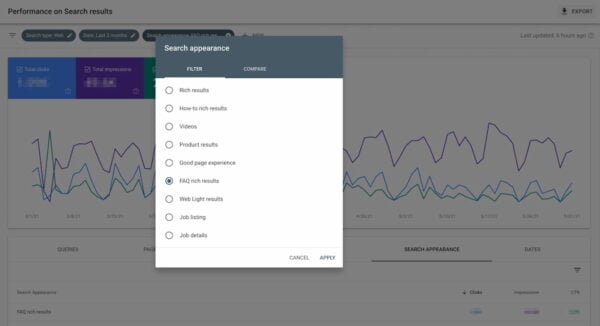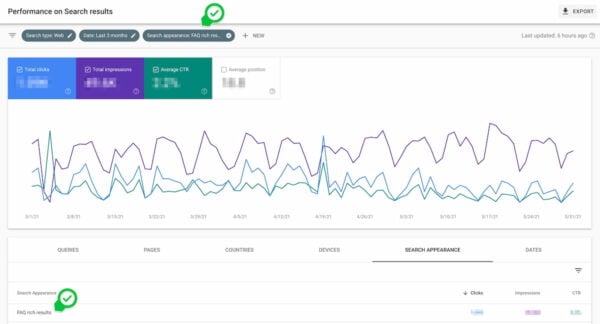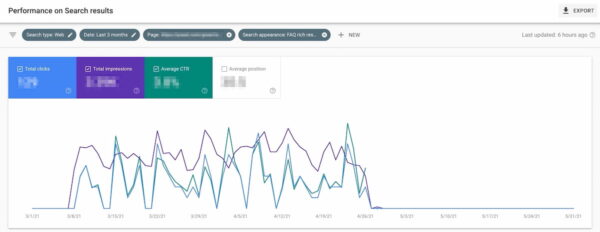Learn how to test the efficiency of your wealthy search leads to the Google Search Console • Yoast
Edwin Toonen
Edwin is a specialist in strategic content. Before joining Yoast, he spent years honing his skills at the leading web design magazine in the Netherlands.
Adding structured data to your website is a great way to describe your content for Google to make it easier for Google to track your pages. After you’ve added it, you can monitor the performance of your rich search results in the Google Search Console. This tool gives you everything you need to get the most out of your rich search results.
Search Console helps improve your structured data implementation
The Google Search Console is an essential tool for any type of website owner. Inside you will find a number of tools that will help you improve your website in a technical sense and serve better content to your visitors. One way is to give you insights into the technical implementation of your structured data improvements and the performance of those rich search results in search results.
In this post we will not focus on the technical part. We’re not going to explain how to fix issues that may arise with your structured data improvements. This time, we’re going to take a look at how your rich search results fare on Google’s search results pages.
What is the report to display in search?
The Search Appearance report in Search Console shows all types of rich search results that your content has achieved. You will also receive data on how users have interacted with these rich search results. This allows you to improve the content of these rich search results.
The performance report deals with two things:
- Clicks: the number of clicks of a search query on a search results page that landed on your website.
- Impressions: the number of times a user has seen a mention of your search result. Every visit to the search results page counts as an impression and your result doesn’t have to be in sight to be counted. Of course, if your entry appears on the next page and the visitor doesn’t get there, it doesn’t count as an impression.
Clicking any type of rich search result in the Search Presentation section will give you additional statistics like that CTR and the average position Of your search results. From this page you can do everything you normally do in Search Console and add even more filters to refine your data. For example, you can only look at mobile usage or how visitors from certain countries interact with your content.
How to use the performance report for your rich search results
As with all things Search Console, there is a lot you can do. However, there is no one-size-fits-all solution that works for everyone in every situation. If you want basic insights into your search performance, you can get it here. If you want to run complex queries and find data for your dashboards, you can find it here too.
Do you want to know how your rich search results are doing? Of course you do! The least you can do is check the Search Console regularly. Go to Performance> Search Results to open the report. You can then access the reports showing the search in two ways: by adding a new filter called Search Presentation in the top bar, or by clicking the Search Presentation tab below the chart.
 Choose the type of search display you want to analyze
Choose the type of search display you want to analyze
Choosing your rich search result
Choosing option two will give you a great look at all of your rich search results that Google has found. Note that the report only shows the types of rich content that Google found on your website. For example, you will notice that all FAQs are tagged with structured FAQ data from Yoast SEO’s structured data content blocks. However, if you are sure that you added a certain type but you don’t see it here, then it might be buggy. Check the Extensions section on the left side of the screen, select your extension and see if there are any errors.
It is also possible that you added content that Google does not mark with a rich search result. You won’t find it here. Of course, Google may add specific rich search results for this in the future, so sometimes it makes sense to add this structured data anyway. Just make sure that your structured data is valid, so don’t forget to test it in the Rich Results Test or the Schema Validator.
Google still dumps some things into a nondescript bucket called Rich Search Results. In no time, that bucket will be gone as Google increasingly adds separate sections for each type of rich search result. Note that Google said that each type of rich search result has slightly different behavior, so it makes sense to break it all up.
View a performance graph for rich search results with frequently asked questions
Choosing a specific rich search result – in this case the FAQ – allows you to look at the data a little more clearly. In the screenshot below you can see the summary data for this content type over a period of three months. This affects all content where you have added valid structured FAQ data.
You can see the total number of clicks, impressions, CTR and the average position of your FAQs. This will give you a sense of how this type of content is performing on your website and will give you a rough idea of how people will interact with it.
 Check the performance of FAQ entries in Google
Check the performance of FAQ entries in Google
Boring
Of course, things get more interesting as you start drilling down. In the screenshot below, we’re looking at a specific page that is showing strange behavior – something we can all see, right?
 Interesting graphic for this particular FAQ
Interesting graphic for this particular FAQ
This page had a FAQ-rich result that went from nothing to something to nothing. If you find something like this, Google’s behavior may have changed for these types of results. You may no longer see a FAQ rich search result for that term or page.
We know Google is showing stricter FAQ rich results these days, which may have to do with it. Or maybe your FAQ is incomplete or has resulted in a bug report?
Or, it could be that your competitor created a better FAQ page and stole your rich result. Search Google for the FAQ content to see if it does. You will also notice it when Google stops displaying FAQs on that term. But if your competitor stole it, you need to improve your site – especially if this is a site that means a lot to you and your business. Don’t assume you will get it back if you rest on your laurels.
This is just a simple example of what you can find by monitoring your rich search results in the Google Search Console. You can use this data to start improving your content so that your rich search results work even better. Of course, you can also use the data to target new people!
Do more with your reports
The Google Search Console is a cool tool that helps you get quick insights, but is also tailored for the power user. For example, you can export your data for analysis in spreadsheets or Excel, or create a Data Studio dashboard. Comfortable with Regex? You can then run complex queries that will give you even more data based on your specific filters. Google has more information on this.
As mentioned earlier, there isn’t a single way to use Search Console – just remember, you should be using it!
Check your rich search results in the Search Console
This post gave a quick look at how you can use the Google Search Console to keep track of the performance of your rich search results. Even if you use it to monitor just a few important posts, it will prove its worth in gold. As you become more experienced, you can use the data to aid the dashboards you created in Google Data Studio. Whatever you do, don’t sleep on this feature!
Read more: How to Create a Google Search Console Dashboard »